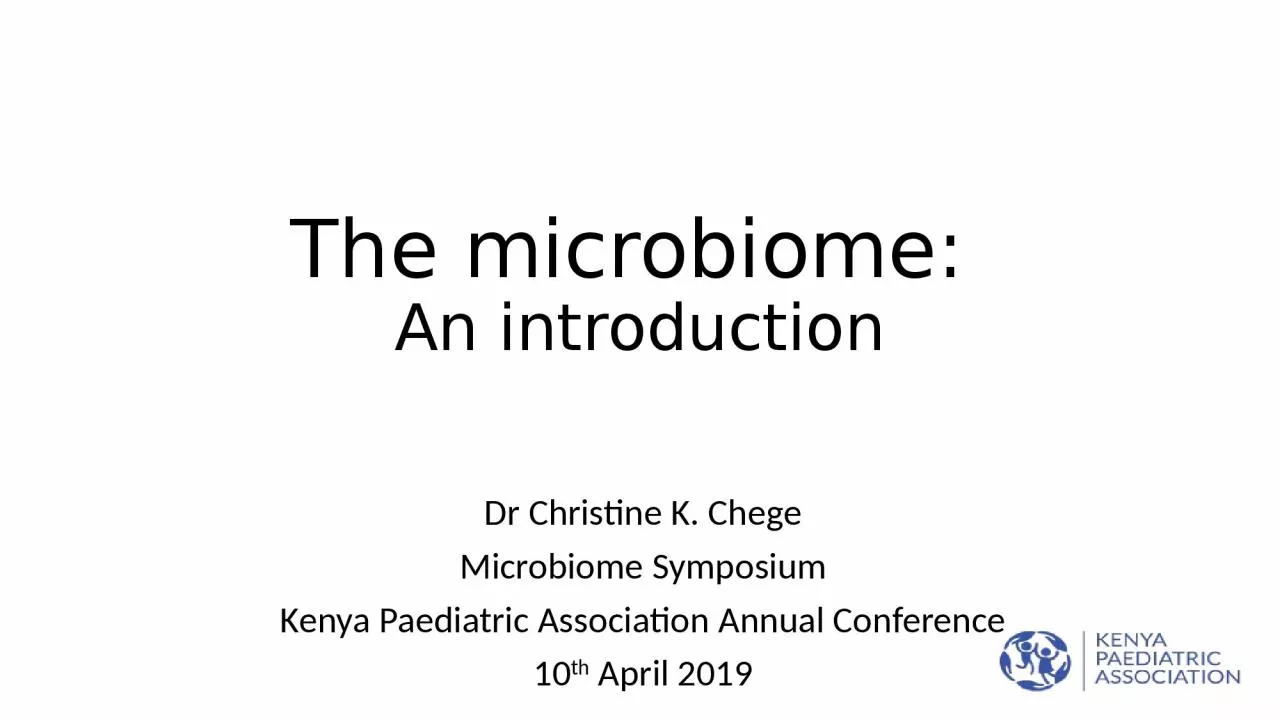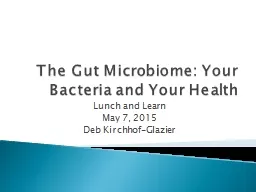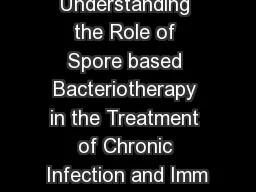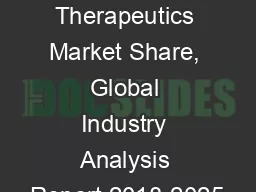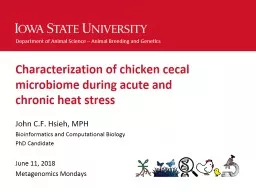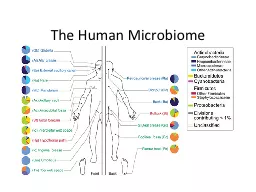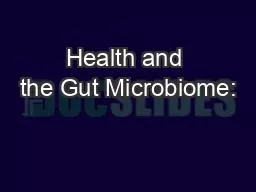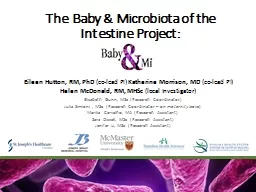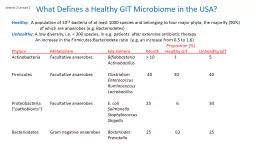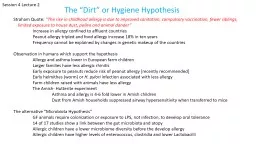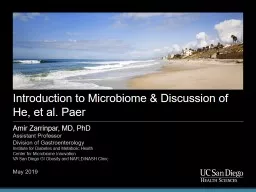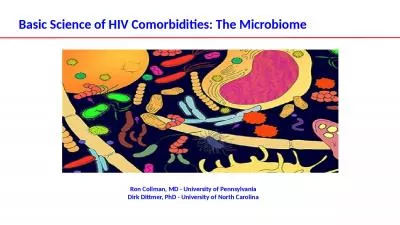PPT-The microbiome : An introduction
Author : Smoke-Fire | Published Date : 2022-08-03
Dr Christine K Chege Microbiome Symposium Kenya Paediatric Association Annual Conference 10 th April 2019 Definition of microbiome The collective genomes of
Presentation Embed Code
Download Presentation
Download Presentation The PPT/PDF document "The microbiome : An introduction" is the property of its rightful owner. Permission is granted to download and print the materials on this website for personal, non-commercial use only, and to display it on your personal computer provided you do not modify the materials and that you retain all copyright notices contained in the materials. By downloading content from our website, you accept the terms of this agreement.
The microbiome : An introduction: Transcript
Download Rules Of Document
"The microbiome : An introduction"The content belongs to its owner. You may download and print it for personal use, without modification, and keep all copyright notices. By downloading, you agree to these terms.
Related Documents

